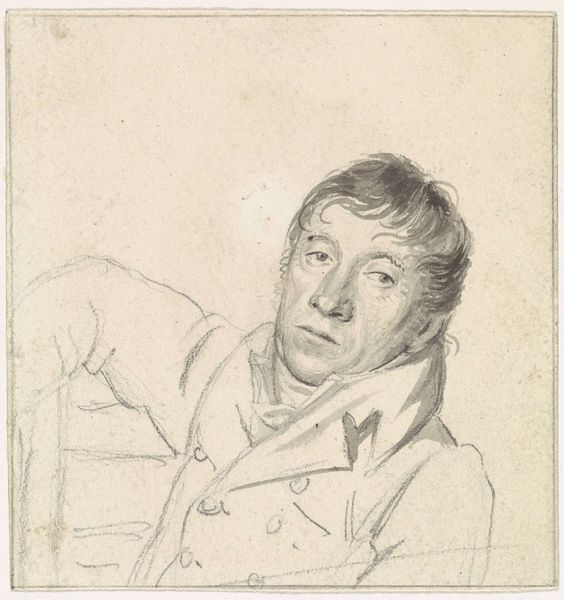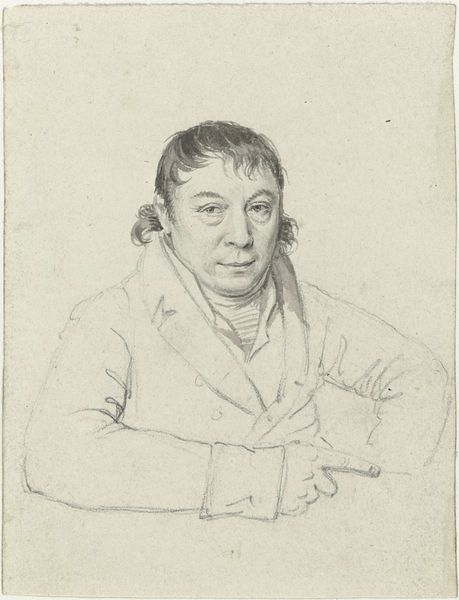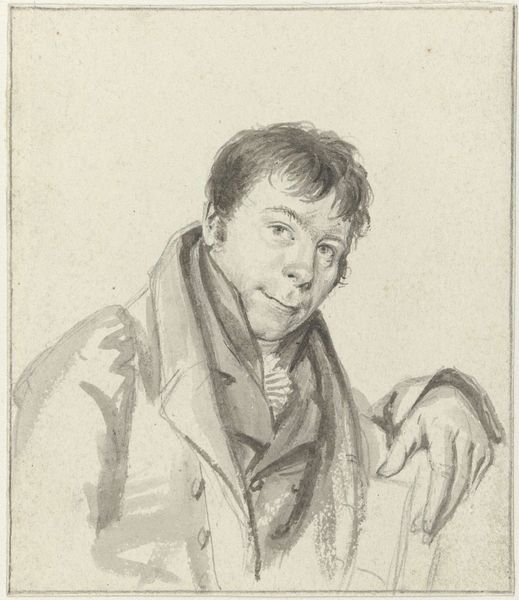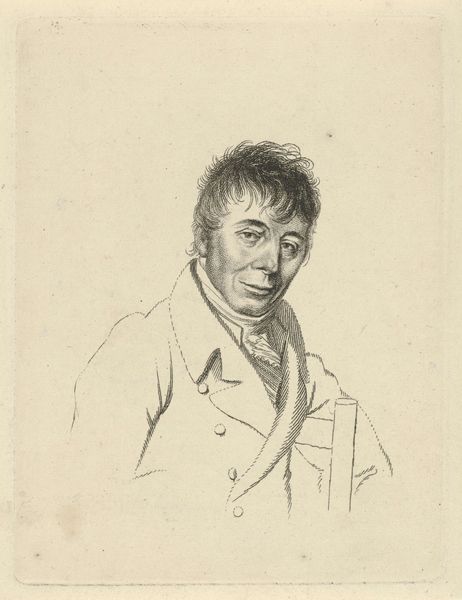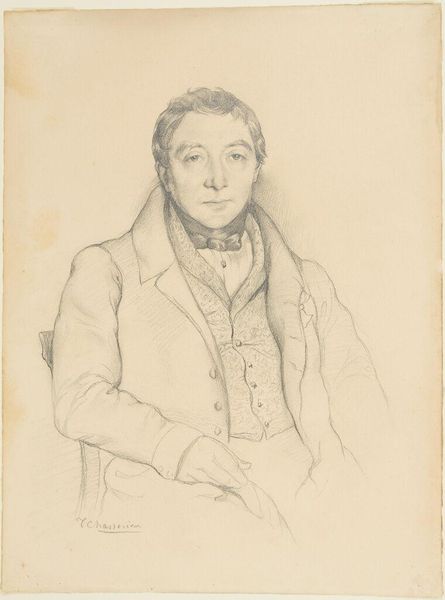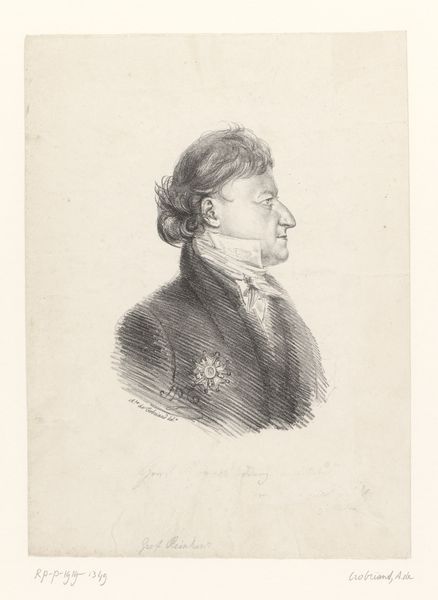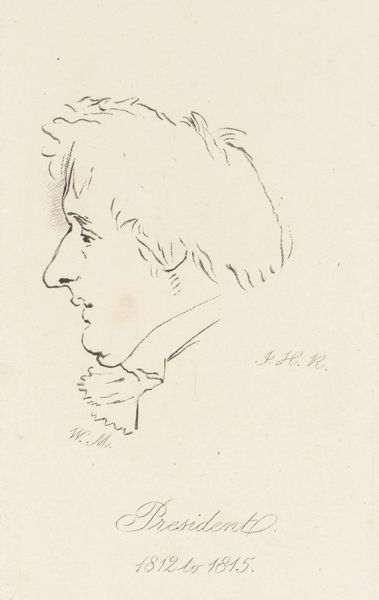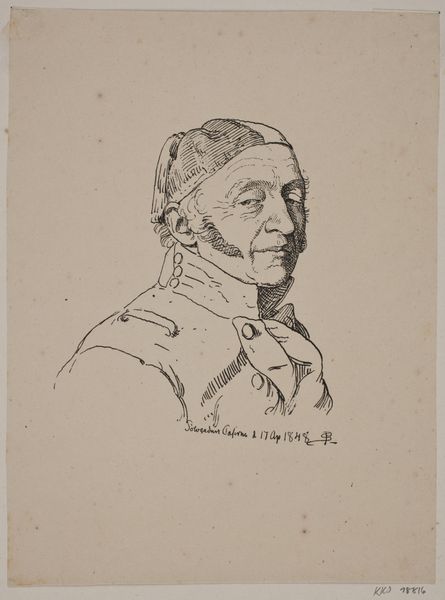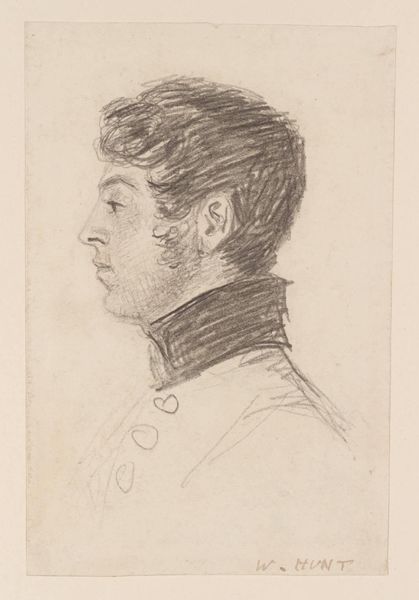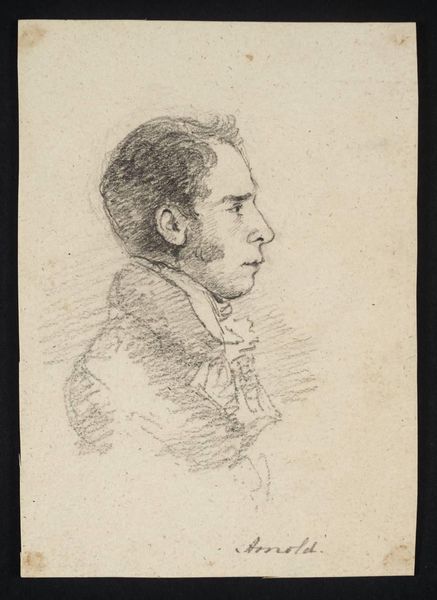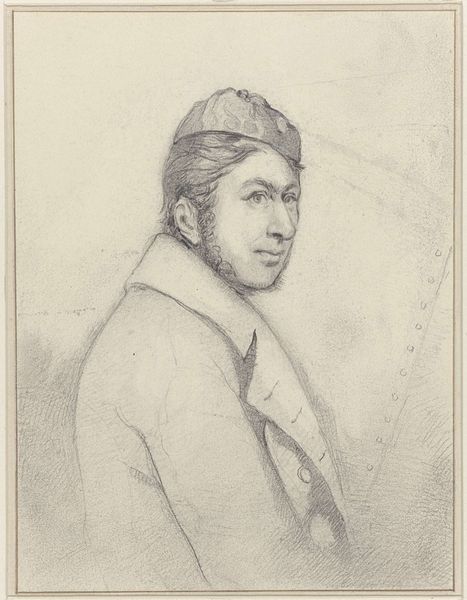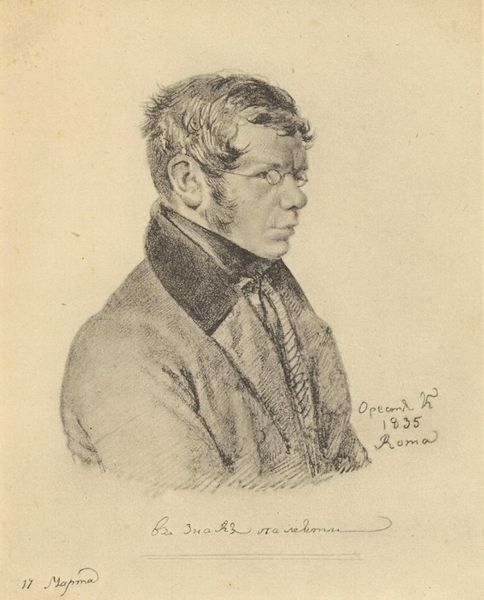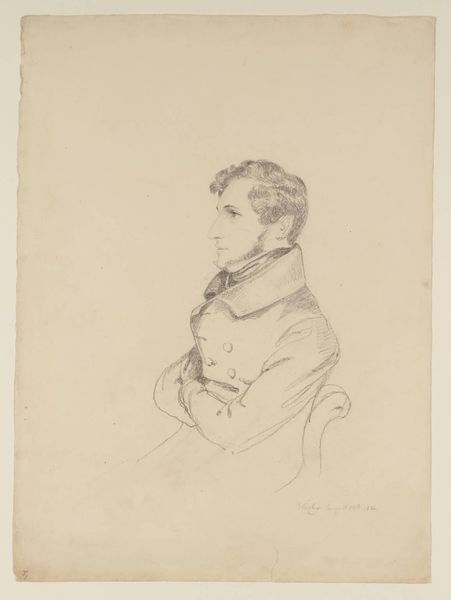
drawing, dry-media, pencil
#
portrait
#
pencil drawn
#
drawing
#
pencil sketch
#
dry-media
#
pencil drawing
#
pen-ink sketch
#
pencil
#
sketchbook drawing
#
portrait drawing
Dimensions: height 97 mm, width 76 mm
Copyright: Rijks Museum: Open Domain
Editor: Here we have Hendrik Willem Caspari's "Portret van A. Pira," dating from 1780 to 1829, a pencil drawing currently housed at the Rijksmuseum. It's striking how direct and unidealized the portrayal is. What can you tell me about this piece? Curator: Well, what immediately strikes me is the tension between the tradition of portraiture and the artist's apparent desire for something more raw, perhaps even democratic. Consider the context: the late 18th century was a time of revolutions. How might the artist's choice of a relatively unvarnished style be a commentary on power and representation? Who was this person, A. Pira? Were they part of emerging social movements? Editor: That's fascinating; I hadn't thought about it in that way. The sketch-like quality makes it seem almost like a snapshot, despite being created over potentially several decades. Was this typical for portraits of the time? Curator: It certainly pushes against the established norms of flattering, idealized portraiture. And the ambiguity of the date adds another layer. Was this a study, perhaps never intended for public display, or was it a conscious decision to present an alternative vision of the individual? Also, look at how the artist renders the sitter's gaze – slightly averted, perhaps contemplative. What might that say about the artist's perception of their subject's interior life, or about societal expectations around masculinity and self-presentation at the time? Editor: I guess I’d assumed it was unfinished but maybe the “unfinished” quality is the point. Thanks, this perspective shifts how I see the drawing entirely. Curator: Indeed. Art like this invites us to interrogate not just the artwork itself, but the systems of power and representation that shape our understanding of it. The drawing opens up a space to think critically about identity, social standing, and the very act of looking.
Comments
No comments
Be the first to comment and join the conversation on the ultimate creative platform.
